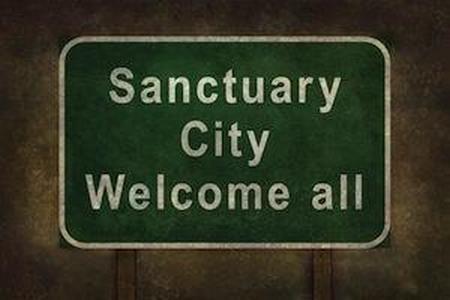Sanctuary Cities: Truth and Fiction
 In the aftermath of the recent election, Donald Trump has pledged to eliminate funding to what he calls sanctuary cities, alleging that they permit undocumented immigrants to hide within their borders, potentially hampering criminal investigations and allowing tragedies like the murder of Kate Steinle to happen. However, there are many myths being bruited about what exactly sanctuary cities do and refuse to do, some of which have been taken up by the incoming administration. It is imperative, especially if you or your loved ones are undocumented, to understand the actual role of sanctuary cities in U.S. immigration policy.
In the aftermath of the recent election, Donald Trump has pledged to eliminate funding to what he calls sanctuary cities, alleging that they permit undocumented immigrants to hide within their borders, potentially hampering criminal investigations and allowing tragedies like the murder of Kate Steinle to happen. However, there are many myths being bruited about what exactly sanctuary cities do and refuse to do, some of which have been taken up by the incoming administration. It is imperative, especially if you or your loved ones are undocumented, to understand the actual role of sanctuary cities in U.S. immigration policy.
A Misunderstood Term
It is important to understand that ‘sanctuary city’ is not a legal term of art; it is a catch-all term used to describe any city that does not move in lockstep with federal immigration policy. Sanctuary cities have existed since the 1980s, stemming from the idea of churches granting sanctuary to criminals in the medieval era. However, the term itself has been corrupted over time, by users on both sides of the aisle. Most laymen use it nowadays to allege that certain cities refuse to surrender undocumented or criminal immigrants to federal authorities, but no state authority can defy federal immigration law. This idea is misguided—if a federal warrant or authority demands a certain person be arrested, a federal officer may not be prevented from detaining that person.
Proponents of cutting funding to sanctuary cities allege that there are “two to three million criminal aliens” that have been released into the United States, but fact-checkers from the Washington Post and other media outlets have thoroughly debunked this claim. The actual number is closer to 90,000. However, it is important to note that the agency vetted these people before deeming them eligible for release.
Who is at Risk?
The common practice in so-called sanctuary cities that many in the immigration debate find objectionable is that local authorities decline to participate in raids or arrest suspects on behalf of Immigration & Customs Enforcement (ICE). Over 200 cities and municipalities have passed regulations or have unofficial policies to not assist ICE in the detaining of immigrants (documented or not), for a variety of reasons. Chicago is one of them, with an unofficial policy firmly in place to remain a sanctuary city, as it has been in the past.
The crux of the argument around sanctuary cities is that it will be less likely for an undocumented immigrant to find themselves in ICE custody there than in other jurisdictions. It does not mean that federal authorities may not detain you or your loved ones (if they are undocumented and/or have a criminal record) of their own volition. If you are detained by state or city authorities, you may have to contend with problems at that level; but, in a sanctuary city, any immigration detainer placed for you will be ignored.
Contact an Immigration Attorney
No one wants to be undocumented. If you or your loved ones are in such a situation, it can be difficult enough to keep yourself safe without the spectre of ICE holds to make it worse. The passionate Chicagoland immigration attorneys at Mevorah & Giglio Law Offices can help you ensure that you understand your rights and your position in the city in which you live. Contact us today to set up a free consultation.
 English,
English,
 Spanish,
Spanish,
 Polish,
Polish,
 Urdu
Urdu













 Make a Payment
Make a Payment



